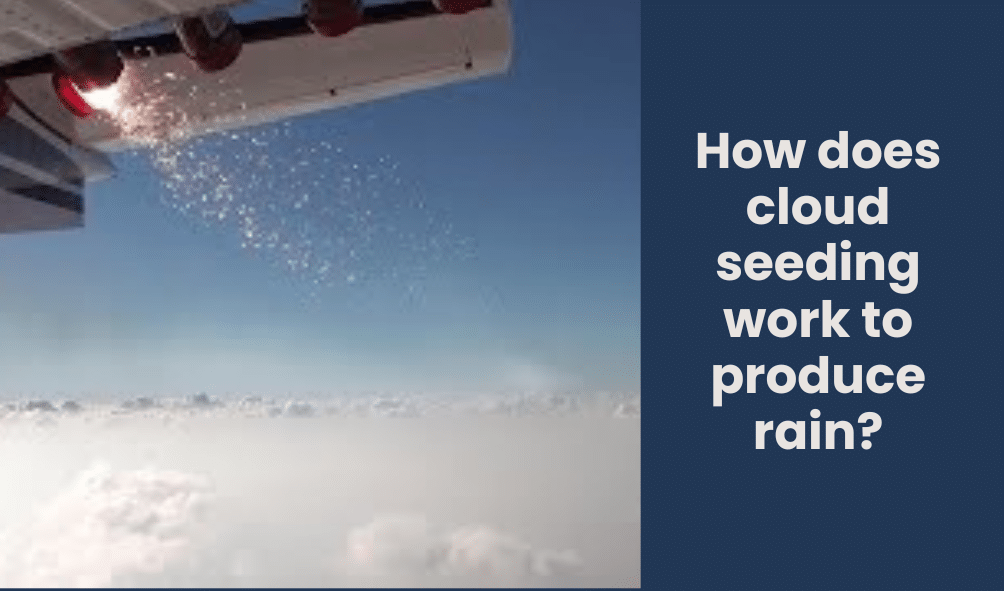Cloud seeding is a weather modification technique that enhances precipitation by introducing specific substances into the atmosphere to stimulate cloud condensation and precipitation processes. Scientists and meteorologists have been experimenting with cloud seeding since the mid-20th century as a way to manage drought conditions, enhance snowfall, and mitigate extreme weather patterns. But how exactly does cloud seeding work to produce rain? This article explores the science behind cloud seeding, its methods, effectiveness, and its implications for the environment.
The Science Behind Cloud Seeding
At its core, cloud seeding relies on the fundamental principles of cloud formation. Natural rain occurs when moisture in the atmosphere condenses into tiny water droplets that eventually coalesce into larger droplets, becoming heavy enough to fall as precipitation. However, in many cases, clouds contain supercooled water droplets—liquid water that remains unfrozen even at temperatures below freezing. These droplets need a nucleus, or a tiny particle, to form ice crystals or raindrops.
Cloud seeding accelerates this process by introducing artificial nuclei into clouds, typically in the form of silver iodide, sodium chloride (table salt), or dry ice (solid carbon dioxide). These materials help water droplets condense more efficiently, increasing the likelihood of precipitation.
Methods of Cloud Seeding
There are three primary methods of cloud seeding:
1. Static Cloud Seeding
Static cloud seeding involves dispersing silver iodide particles into the cloud. Silver iodide has a crystalline structure similar to ice, which makes it effective in attracting supercooled water droplets. When these droplets latch onto the silver iodide particles, they freeze, grow, and eventually fall as precipitation.
2. Dynamic Cloud Seeding
Dynamic cloud seeding takes cloud modification a step further by using silver iodide or other substances to enhance vertical air currents within the cloud. This process promotes more vigorous cloud growth, increasing the cloud’s ability to hold and release moisture. It involves a complex series of atmospheric reactions that amplify the precipitation process.
3. Hygroscopic Cloud Seeding
Hygroscopic cloud seeding uses common salts such as sodium chloride or calcium chloride. These substances attract moisture and encourage cloud droplets to merge into larger droplets. This method is particularly useful in warm clouds where ice formation is not a prerequisite for rainfall.
Methods of Dispersing Seeding Agents
Cloud seeding agents can be dispersed using different techniques, each tailored to specific weather conditions and logistical considerations:
- Aircraft Dispersal – Planes equipped with specialized flares release seeding materials into the clouds, allowing for precise targeting of cloud formations.
- Ground-Based Generators – Silver iodide or other seeding agents are released from ground stations where upward-moving winds carry the particles into the clouds.
- Rocket and Artillery Shells – Some regions use rockets or artillery shells to deliver seeding materials into cloud formations, particularly in areas difficult to reach by aircraft.
Effectiveness of Cloud Seeding
The effectiveness of cloud seeding varies depending on meteorological conditions, cloud composition, and the method used. While studies indicate that cloud seeding can increase precipitation by 10-30% under optimal conditions, success is not guaranteed. Scientists continue to refine cloud seeding techniques through controlled experiments and field studies.
Applications of Cloud Seeding
Cloud seeding has several practical applications worldwide, including:
- Drought Mitigation – By enhancing rainfall, cloud seeding helps alleviate water shortages in arid regions.
- Agricultural Benefits – Increased precipitation supports farming activities and reduces the risk of crop failures due to dry conditions.
- Snowpack Enhancement – In mountainous regions, cloud seeding boosts snowfall, replenishing water reserves for hydroelectric power and irrigation.
- Hail Suppression – In some cases, cloud seeding is used to disrupt hail formation, preventing damage to crops, infrastructure, and vehicles.
Environmental and Ethical Considerations
Despite its potential benefits, cloud seeding raises several environmental and ethical concerns:
- Ecological Impact – The introduction of foreign substances into the atmosphere may have unintended consequences on local ecosystems.
- Water Redistribution – Cloud seeding does not create new water but redistributes existing moisture, which could raise disputes over water rights and regional precipitation patterns.
- Health Concerns – Although silver iodide is used in small amounts, some worry about long-term environmental and human health effects.
- Weather Manipulation Ethics – The ability to modify weather raises ethical questions about who has the right to control natural processes and the potential for unintended geopolitical consequences.
Conclusion
Cloud seeding is a fascinating scientific endeavor with significant potential to alleviate drought, enhance water supplies, and mitigate extreme weather. While research continues to refine its effectiveness and environmental impact, cloud seeding remains a promising tool in managing precipitation. However, ethical and ecological considerations must be carefully weighed as humanity seeks to harness the power of weather modification.
As climate change intensifies weather variability, cloud seeding may become an increasingly important strategy for sustainable water resource management, but its long-term implications require careful study and responsible implementation.







